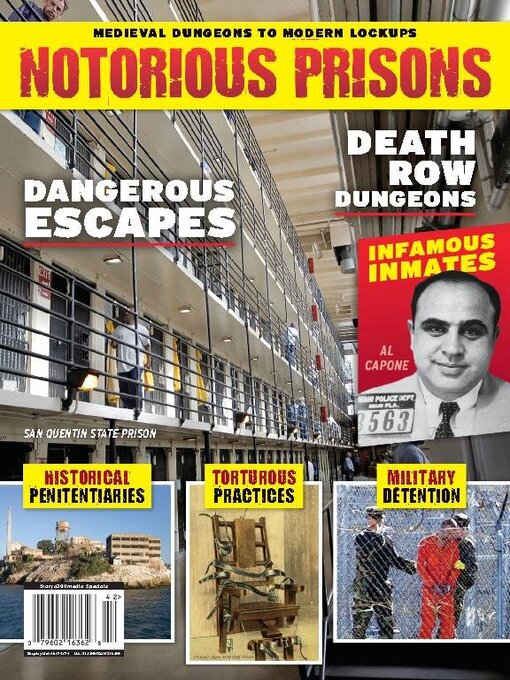Medieval dungeons, remote islands and foreboding edifices are just some of the places of incarceration in Notorious Prisons. Tales of torture and woe, wrongful imprisonment, dangerous escapes and infamous inmates are accompanied by images of creepy cells and the dank chambers in these monuments to crime. As the archaic prisons of old gave way to progressive policies in the 19th century and eventually modern prison systems, stories of riots and reform, successes and failures continued. Notorious Prisons captures it all while filling in the history of penal institutions around the world.
INTRODUCTION
EVOLUTION OF PRISONS AROUND THE WORLD • In many ancient civilizations, such as Egypt, Babylon and Greece, imprisonment was used as a means of detention while awaiting trial, punishment or debt repayment. These early forms of imprisonment were often rudimentary and inhumane, with prisoners held in dungeons or dark, unsanitary cells.
ANCIENT CIVILIZATIONS • The concept of imprisonment stretches back to the earliest recorded civilizations. In these societies, the primary functions of prisons were not necessarily punitive or rehabilitative, but were focused on detainment, slave labor and neutralizing perceived threats. Prisons were often an extension of political power, social control and economic exploitation.
MEDIEVAL EUROPE • Medieval prisons, spanning the 5th through the 15th century, were mainly used for holding detainees before their trial or execution, rather than for long-term incarceration as a punishment in itself. Punishments more often involved physical penalties, like beating, mutilation, or execution.
THE PENITENTIARY MOVEMENT
NOTORIOUS PRISONERS • Prisons gain notoriety not just for their facilities and conditions, but also for the famous inmates who reside inside their walls. Prisoners captivate public attention for various reasons, often blending elements of fear, intrigue and a persona that can fascinate or repel.
NOTORIOUS PRISON RIOTS
INFAMOUS MILITARY PRISONS • Military prisons hold military personnel who have violated military laws, prisoners of war, people who threaten the security of the United States or military members found guilty of a serious crime. Military prisons carry their own unique history and set of controversies.
NOTORIOUS PRISONS AROUND THE WORLD
A LOOK AT MODERN AMERICAN PRISONS • Modern prisons, while an improvement on some of the harsh penal environments of the past, still fall under criticism by reformers due to less than ideal conditions for inmates.
A DAY IN THE LIFE • In order to maintain security, inmates at Leavenworth typically follow a structured schedule, although their exact daily routines can vary depending on the security level, specific housing unit and programs they participate in. Typically, life in prison is highly regimented and controlled, with strict rules governing inmates’ behavior. Inmates at Leavenworth, like those in other prisons, have limited privacy and autonomy.
BEST PRISON MOVIES • Stories about life in prison capture the imagination, and these movies have earned a place as some of the most notorious prison films:
CONCLUSION
Notorious Prisons

